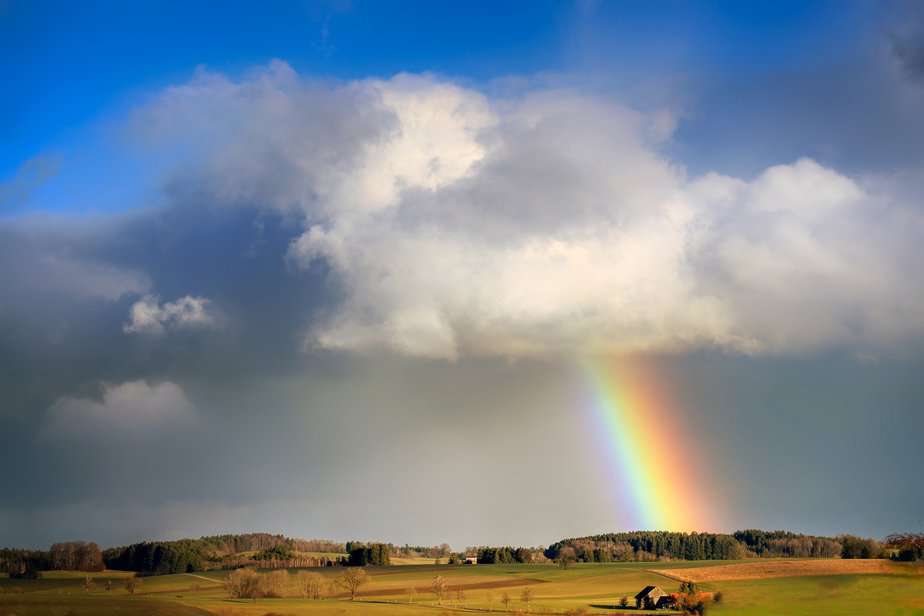
Low rainfall and water scarcity are significant challenges that require proactive and multi-faceted solutions.
Low rainfall or drought is a pressing concern in many regions across the world, leading to water scarcity, crop failures, and environmental challenges. Climate change and natural variability have exacerbated this issue, making it essential for communities to implement proactive strategies to address low rainfall and its consequences.
So let’s explore effective ways to mitigate the impact of low rainfall and ensure sustainable water management.
Understanding the Impact of Low Rainfall
Low rainfall, whether it occurs in a particular season or persists over several years, can have devastating effects on ecosystems, agriculture, and human populations.
The consequences of low rainfall include:
Crop Failures: Insufficient rainfall can lead to drought conditions, damaging crops and threatening food security.
Depleted Water Resources: Low rainfall reduces water levels in rivers, lakes, and aquifers, affecting both drinking water supplies and irrigation for agriculture.
Increased Wildfires: Dry conditions resulting from low rainfall can elevate the risk of wildfires, posing a threat to communities and ecosystems.
Ecosystem Damage: Low rainfall negatively impacts natural habitats, leading to habitat loss and endangering wildlife.
Economic Losses: The agricultural sector, in particular, suffers significant economic losses due to low rainfall, affecting livelihoods and economies.
Strategies for Solving Low Rainfall
Rainwater Harvesting
One effective way to address low rainfall is by implementing rainwater harvesting systems. These devices collect and hold rainwater for a variety of purposes, including irrigation, domestic consumption, and recharging groundwater. Strategies like check dams, rooftop rainwater harvesting, and percolation ponds can help maximize water availability during dry periods.
Diversified Water Sources
Relying solely on rainfall for water supply can be risky during low rainfall periods. Communities and farms should consider diversifying their water sources. This may involve drilling wells, tapping into groundwater reserves, or using surface water from rivers and reservoirs. Using multiple sources of water reduces vulnerability to drought.
Water Conservation Practices
Conserving water is crucial, especially during times of low rainfall. Implement water-efficient technologies in homes, industries, and agriculture. This includes drip irrigation, mulching, and the use of low-flow fixtures in households. These practices minimize water wastage and ensure efficient use of available resources.
Sustainable Agriculture
Incorporating sustainable agricultural practices can mitigate the impact of low rainfall on crops. Crop rotation, drought-resistant crop varieties, and soil conservation techniques help maintain soil moisture and improve crop resilience. Additionally, using cover crops and organic farming methods can enhance soil health and water retention.
Desalination
In regions where access to freshwater is severely limited, desalination can be a viable option. Desalination processes remove salt and impurities from seawater, making it suitable for drinking and irrigation. While desalination can be energy-intensive and expensive, advances in technology are making it more accessible and environmentally friendly.
Water Recycling and Reuse
Implementing water recycling and reuse systems in industries and municipalities can reduce water demand and alleviate stress on water resources during periods of low rainfall. Treated wastewater can be safely reused for non-potable purposes like industrial processes, irrigation, and even toilet flushing.
Forest and Watershed Management
Proper management of forests and watersheds is crucial for maintaining healthy ecosystems and ensuring a consistent water supply. Forests play a vital role in rainfall generation, and watershed management practices can help retain rainwater, reduce soil erosion, and improve groundwater recharge.
Education and Awareness
Community education and awareness campaigns are essential to promote water conservation and sustainable practices. Encouraging individuals and communities to understand the value of water, adopt water-saving habits, and engage in conservation efforts can have a significant impact on mitigating low rainfall’s effects.
Government Policies and Regulations
Governments can play a pivotal role in addressing low rainfall by implementing policies and regulations that promote sustainable water management and conservation. This may include setting water-use restrictions during droughts, incentivizing water-efficient technologies, and investing in infrastructure for water storage and distribution.
Climate Resilience Planning
Developing climate resilience plans at local and regional levels is critical for addressing the long-term challenges associated with low rainfall. These plans should assess vulnerabilities, identify adaptation strategies, and prioritize investments in infrastructure and technology to ensure water security in changing climates.
Conclusion
By implementing a combination of rainwater harvesting, diversified water sources, water conservation practices, sustainable agriculture, desalination, water recycling, forest and watershed management, education, government policies, and climate resilience planning, we can mitigate the impact of low rainfall and build more resilient communities and ecosystems. Solving low rainfall is not a task for one entity alone; it requires collaboration and commitment from individuals, communities, governments, and industries to ensure a sustainable and water-secure future.
More reading
8 Steps to Calculate How Much Water You Need in Storage to Achieve Water Security in a Drought

Pingback: 10 Essential Tips For Water-Wise Farming To Ensure Water Security | Big Ditch Dam Building Company
Pingback: Earth Dam Geology: Site Selection And Assessment | Big Ditch Dam Building Company
Pingback: Sydney Should Prepare For Future Water Shortages | Big Ditch Dam Building Company
Pingback: Challenge Of Environmental Climate Change In Australia | Big Ditch Dam Building Company
Pingback: Unpredictable Drought Ravages NSW: A Farmer's Tale Of Struggle | Big Ditch Dam Building Company
Pingback: Farm Dam Construction And Water Storage For Resilient Emergency Preparedness | Big Ditch Dam Building Company
Pingback: 10 Reasons Why Water Is Important For The Survival Of Civilization | Big Ditch Dam Building Company
Pingback: Water Treatment Solutions For Farm Dams | Big Ditch Dam Building Company
Pingback: Australian Dam Levels Decline Amid Surging Water Usage | Big Ditch Dam Building Company
Pingback: What Causes A Lack Of Rainfall? Understanding The Factors Behind Dry Spells | Big Ditch Dam Building Company
Pingback: Australians Are 'Sitting Ducks' When It Comes To Droughts | Big Ditch Dam Building Company